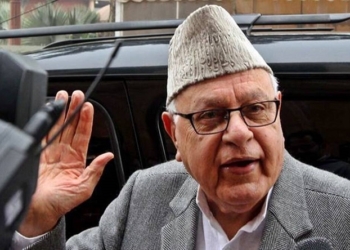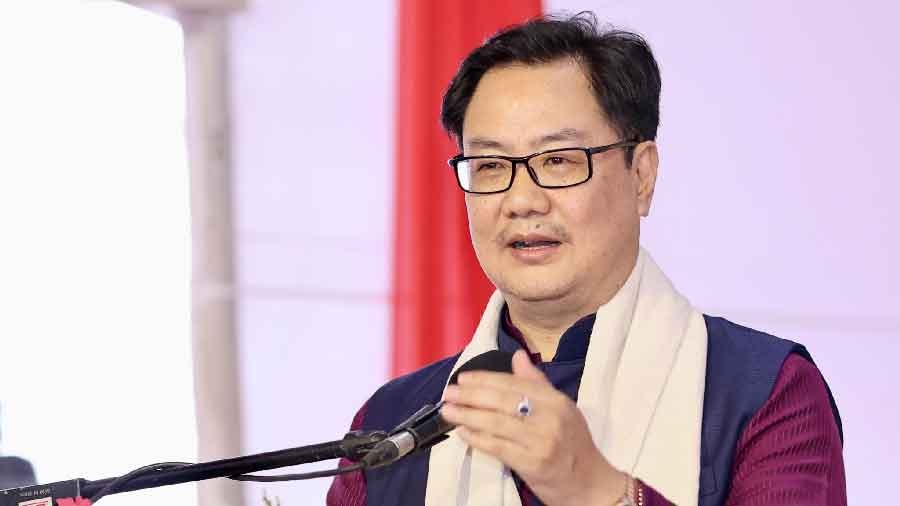
Decentralized Solar power systems with Lithium Ion battery is the future of J&K
LAST year during the COP 26 summit at Glasgow, Prime Minister Narendra Modi pledged that India would cut its emissions to net zero by 2070. PM Modi also assured that by 2030 it would increase non-fossil fuel energy capacity to 500 GW and meet counties 50 % of energy requirements from clean energy. In addition, India also pledged to reduce total projected carbon emissions by 1 billion tonnes and reduce carbon intensity of the economy by 45 %.
As India happens to be the third biggest greenhouse gas emitter after the United States and China, this is a significant development indeed. In order to fulfil the commitments made at COP 26 summit , India needs huge investment to support the non-renewable
Community Solar Plants
As the world is undergoing a fundamental shift in the energy sector from fossil fuel-based systems to increasingly decentralized renewable energy systems at scales to suit all energy sectors. Limited energy infrastructure, population spread over vast areas and an arid climate in Jammu and Kashmir was a big disadvantage. But now there is an advantage by installing solar power generation infrastructure at community level. Jammu & Kashmir has unmatched renewal energy availability. The technologies required to utilize this energy can be scaled to meet every need and installed wherever energy is needed. Furthermore, Jammu and Kashmir can avoid costly lock-in of centralized energy systems in areas previously without electricity and upgrade existing systems creating energy security. This will also ensure safeguarding our natural resources like forests which are off and on damaged during laying of huge transmission lines and construction of dams for hydropower plants.
There is an urgent need to utilize solar power potential in J&K by setting up Community Solar Power plants under Independent Power Producer (IPP) mode. Under this programme, 2 Megawatt (MW) Solar Power can be generated in a cluster of 10 village panchayats. There is also a great possibility for the expansion of opportunities into energy services in every urban neighbourhood. This will ensure sustainable livelihoods for families, farmers, small and medium sized businesses, and multiple service providers. There is great potential for job creation in this sector. In a place like Jammu & Kashmir, we have a huge potential to see growth of renewable sources of energy particularly solar energy. This needs to be harnessed in driving socio-economic development and support the achievement of the Sustainable Development Goals (SDGs). However, as of now, when it comes to solar power generation, the only solar plant set up in J&K is at Katra Railway Station, which has a generation capacity of only 1 MW. This natural blessing entails us to exploit judicially and adopt different methodology for the different regions of Jammu & Kashmir .
Decentralized Solar plants
The Central Government had announced plans to build the World’s largest Solar Energy Power Plant farms in the Union Territory of Ladakh, which would be as big as 5,000 MW. This would be equally distributed as 2500 MW’s each for Leh and Kargil. It is still unclear when the work on this project would be taken up.
Due to hilly terrain, poor health of the weak grid, huge gap of supply demand, mismatch load profile, stability issue of the power system, occupancy of huge areas of land required nearest to the load centres and nearness to urban entails us that we should not go for big solar power farms in all other areas except Leh and Kargil areas.
The most viable solution is tapping distributed small farms solar power through Independent Power Producers (IPP) community mode only. In community mode, a group of the investors is created which consists of unemployed engineers, developers, representatives from each Panchayat. They identify 60 to 70 Kanals of hilly uncultivated ownership land/ lease land. Then prepare a Detailed Project Report (DPR) of Grid connected 2 MW Solar power farms. This proposal is sent to Jammu & Kashmir Energy Development Agency (JAKEDA) and Power Development Department (PDD) for their approval.
The 2MW solar power farm can be commissioned in 6 months’ time and power can be evacuated through the nearest 11kv station/lines and thus making the village Panchayat self-sufficient vis a vis power. Once the power in each Panchayat is obtained, then small village industries can come up and usher in an era of sustainable development with clean energy. To start with, if we simultaneously take 10 solar power farms of 2MW each, this means that 20MW solar power in Independent Power Producers (IPP) community mode can be obtained in a shortest span of 6 months besides creating employment opportunities for the people in each village panchayat. The income from these farms can be shared proportionally for the development of the Panchayat.
Scorching Reality
As reported by Kashmir Observer earlier, Solar Energy Corporation of India (SECI) has proposed many mega solar power projects in few districts of the erstwhile state of Jammu and Kashmir (J&K), but the completion of these projects is far from reality. Concerns over the safety and viability of these projects in J&K are raised from time to time. Experts suggest that such projects may help in boosting job opportunities and electricity production that ultimately will benefit the local population. While it is a challenging task for engineers to set up power grids on tough terrains of the region but, many say, the innovative solutions may help in yielding promising results.
Interestingly, the successive central and state governments over the past few years promised to make J&K a hub of solar energy production but the study conducted by the Centre for Science and Environment has placed J&K at bottom of the list.
J&K was placed even below Bihar which has managed to install 20 MW Solar Roof Top (SRT) power. Notably, ever since Union Ministry of New and Renewable Energy launched the Jawaharlal Nehru Solar Mission in 2010, J&K has been lagging behind.
According to the official figures released by Jammu Kashmir Energy Development Agency (JAKEDA), SRT panels of 8 MWs were installed in different parts of J&K.
The primary reason for the lack of growth in the solar sector in J&K is the shortage of resources.
According to the agreement between the centre and the states, J&K was bound to pay 40 percent of the total funds but a majority of the projects were scrapped, subjecting to J&K’s inability to pay its share of funds.
As per an estimate, a 70 percent subsidy is provided by JAKEDA to any household installing SRT panels on rooftops of their homes.
It’s believed that since the cost of electricity is very less in J&K, majority of households hesitate in investing in solar panels.
The lack of cooperation from the various authorities concerned is equally proving to be a major stumble in developing solar power infrastructure in J&K. The red-tapism is also being blamed for not helping the cause.
In past, a 200 KW plant was installed by JAKEDA at Sher-E-Kashmir Institute of Medical Sciences, but no progress had been made on it so far.
The only department that has been utilising the benefits of renewable energy is the J&K Police department. A good number of SRT panels are installed on the rooftops of many police stations over the past few years.
Many environmental experts advocate the use of unconventional or renewable sources of energy such as solar energy as a means to combat the impact of climate change.
Experts suggest that the process of generating solar power is way cheaper than building a hydropower plant of similar capacity.
The time taken to build a solar power plant is also very less than building a hydropower plant.
At the beginning of 2019, an Economic Times report says, the total installed power capacity in the J&K was 3393.74 MW.
The same report states that though J&K is the second largest state in terms of having the potential for solar power generation, yet solar power has very little contribution in this region.
Policy formulation
The Jammu & Kashmir Government must formulate a simple policy for utilizing solar energy under IPP mode as expeditiously as possible. This would ensure participation of more and more local developers especially the unemployed educated youth, unemployed engineers and other technocrats for taking up 2MW small solar power farms in all the hilly areas of Jammu & Kashmir. Moreover, any experience and huge turn over clause in the agreement /policy should not be made as essential criteria as this would deprive local entrepreneurs from setting up these small solar power projects. If the target to achieve 1150 MW of solar power is to be achieved by year 2022 then the Government has to have liberal policies and local residents of Jammu & Kashmir should be given preference in setting up these small projects. This will not only give us clean energy but will also create employment opportunities for the many unemployed technocrats and people living in the villages where such projects would be taken up. A single window system should be created by the Government for helping local entrepreneurs to participate in this entire process.
Lithium ion Batteries
The traditional solar lights used lead acid batteries and they were a popular choice because of their compatible price range. One of the big challenges in using lead acid batteries in solar lighting units is that they require bigger solar panels and in order to charge a lead acid battery, a solar panel has to produce a minimum 12 Volts, therefore, during non-sunny days, it is almost impossible to charge these batteries. The modern solar based lighting systems for domestic consumption use Lithium-ion batteries which are better than their earlier counterparts in the context of price and size. Lithium batteries have been in use for commercial applications since the 1990s and over the last few years, it is proven to be the most used and reliable energy storage technology. They are being used to operate laptops, medical equipment, mobile phones, cameras, electric vehicles, etc. Their high energy density and being the lightest metal help them produce a lot of energy without being heavy, which works perfectly for the present-day lightweight, energy-efficient solar lights. Li-ion batteries live up to five times longer than lead-acid batteries with an average lifespan of around 5 to 6 years. Since they do not require frequent maintenance like lead acid batteries, they are practically the best for solar lights.
Conclusion
The huge international investments in clean energy systems in India in the next 5 to 10 years means more job creation in this sector. There is a great potential for solar based energy systems in Jammu & Kashmir which is much needed as the complete focus of successive Governments has been on hydropower which is in fact a non-fossil energy source but creating such plants, we have to sacrifice our mountains and forests. It causes huge environmental disasters which are visible in Doda, Kishtwar, Ramban, Reasi and other areas. The people living in these areas are still not getting uninterrupted electricity.
- Views expressed in the article are the author’s own and do not necessarily represent the editorial stance of Kashmir Observer
Follow this link to join our WhatsApp group: Join Now
Be Part of Quality Journalism |
Quality journalism takes a lot of time, money and hard work to produce and despite all the hardships we still do it. Our reporters and editors are working overtime in Kashmir and beyond to cover what you care about, break big stories, and expose injustices that can change lives. Today more people are reading Kashmir Observer than ever, but only a handful are paying while advertising revenues are falling fast. |
| ACT NOW |
| MONTHLY | Rs 100 | |
| YEARLY | Rs 1000 | |
| LIFETIME | Rs 10000 | |












